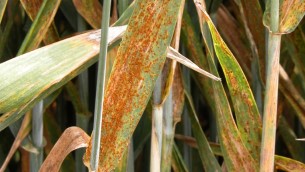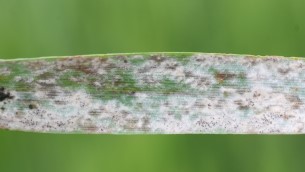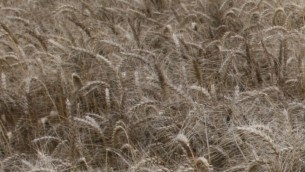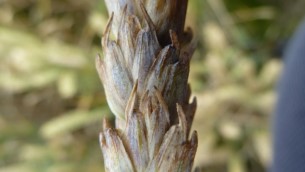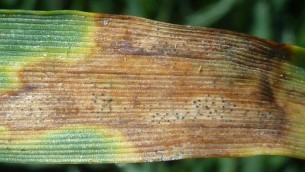Stripe Rust - Wheat
Puccinia striiformis
Stripe rust (Puccinia striiformis) also known as yellow rust, is a common disease of wheat which can result in significant yield loss if not controlled. Stripe rust is favoured by cooler, moist conditions with the initial
source of inoculum being infected volunteer cereals. Under favourable conditions stripe rust can develop very quickly forming disease foci surrounding the initial infection source. At first spores tend to be scattered on the leaf but on more mature leaves they show the typical stripe arrangement which gives the fungus its common name. Occasionally stripe rust can infect the ear.

Stripe rust is found throughout NZ. Rusts are wind dispersed placing all wheat crops at risk.
Look out for:
- Yellow rust pustules arranged in stripes
Risk factors:
- Cultivar choice
- Cool, moist conditions
Stripe rust tends to develop earlier in spring, being favoured by cool, moist conditions whereas leaf rust is more of a problem in early to mid-summer.
Early infections of stripe rust are hard to distinguish from leaf rust pustules scattered on the surface of leaves. Later stripe rust pustules, which are quite yellow, form distinct stripes whereas leaf rust pustules, which are brown, remain scattered on the leaf.
Yield losses can be high, often in the order of 15-40%.











